 "ttyymmnn" (ttyymmnn)
"ttyymmnn" (ttyymmnn)
10/08/2019 at 12:35 • Filed to: wingspan, Planelopnik, TDIAH
 4
4
 4
4
 "ttyymmnn" (ttyymmnn)
"ttyymmnn" (ttyymmnn)
10/08/2019 at 12:35 • Filed to: wingspan, Planelopnik, TDIAH |  4 4
|  4 4 |
!!! UNKNOWN CONTENT TYPE !!!
Welcome to
This Date in Aviation History
, getting of you caught up on milestones, important historical events and people in aviation from October 5 through October 8.
!!! UNKNOWN CONTENT TYPE !!!
 !!!CAPTION ERROR: MAY BE MULTI-LINE OR CONTAIN LINK!!!
!!!CAPTION ERROR: MAY BE MULTI-LINE OR CONTAIN LINK!!!
October 6, 1977 – The first flight of the Mikoyan Gurevich MiG-29. During the Vietnam War, the US Air Force discovered that using high speed fighter aircraft in the ground attack role left them vulnerable to attack from above. Air superiority became the watchword, as the US sought to take control of the airspace over the battlefield and dominate it in the same way they had late in WWII, and again during the Korean War. In the 1960s, the Air Force began its F-X program to develop a new air superiority fighter, a competition which brought about the superb !!!error: Indecipherable SUB-paragraph formatting!!! , which was awarded a production contract in 1969 based on a technical proposal and took its maiden flight in July 1972. But the arms race being what it was, and still is, the Soviet Union had to respond to the threat posed by this new high-performance American fighter, and they began their own program in 1969 to produce a new frontline air superiority fighter to counter the Eagle.
 !!!CAPTION ERROR: MAY BE MULTI-LINE OR CONTAIN LINK!!!
!!!CAPTION ERROR: MAY BE MULTI-LINE OR CONTAIN LINK!!!
Dubbed Perspektivnyy Frontovoy Istrebitel ( PFI , or Advanced Frontline Fighter ), the program called for an agile, long-range fighter with Mach 2+ speed and the ability to operate from rough or unimproved airstrips. But as development progressed, the Russians found themselves in a similar situation as the Americans, needing both a heavy air superiority fighter and a lighter multi-role fighter. Thus, the MiG-29 became roughly analogous to the !!!error: Indecipherable SUB-paragraph formatting!!! , while the larger and heavier !!!error: Indecipherable SUB-paragraph formatting!!! took on the role of the heavy fighter.
 !!!CAPTION ERROR: MAY BE MULTI-LINE OR CONTAIN LINK!!!
!!!CAPTION ERROR: MAY BE MULTI-LINE OR CONTAIN LINK!!!
The MiG-29 is powered by a pair of
!!!error: Indecipherable SUB-paragraph formatting!!!
afterburning turbofans spaced far enough apart that the area between them produces additional lift. The air intake are fitted with flaps that can be closed to prevent the ingestion of foreign object debris during landing and takeoff from unpaved airstrips. Vents in the top of the fuselage then open to provide air to the engines. The MiG-29 is armed with a single 30mm cannon in the wing root, and is also fitted with a laser rangefinder and
!!!error: Indecipherable SUB-paragraph formatting!!!
(IRST) system housed in an eyeball-like bubble forward of the cockpit. This system allows the pilot to track targets that emit infrared radiation while not giving off any energy of its own, making it difficult for the target aircraft to know they are being tracked. Numerous missiles, rockets, and bombs can also be fitted to the MiG-29's six underwing hard points.
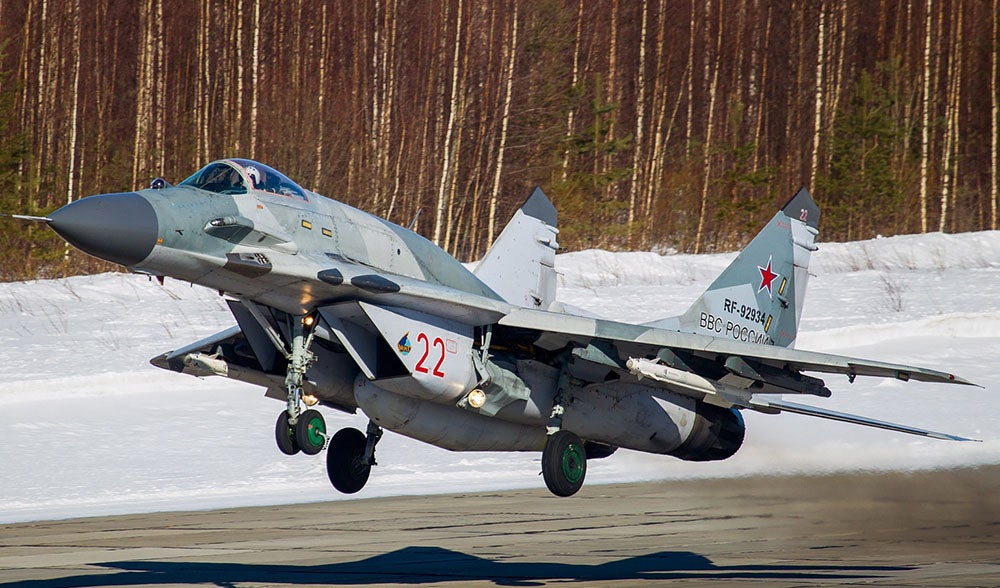 !!!CAPTION ERROR: MAY BE MULTI-LINE OR CONTAIN LINK!!!
!!!CAPTION ERROR: MAY BE MULTI-LINE OR CONTAIN LINK!!!
The MiG-29 entered service with the Soviet frontline forces in 1982 and was given the NATO designation Fulcrum . By the mid-1980s, the MiG-29 began appearing at international air shows, but the capabilities of the Fulcrum remained a mystery to the West until analysts and pilots were able to fly a number of them following the reunification of Germany in 1990. In 1997, the US bought Moldova’s stock of 21 MiG-29s to prevent their sale to Iran or other rogue states, and the purchase had the added benefit of providing an opportunity to train head to head against the Fulcrum. Western analysts found the Fulcrum to be a capable dogfighter, notable for its helmet-mounted sight that could target an air-to-air missile while the aircraft’s nose was pointed in another direction. But it also had a relatively short range and a somewhat primitive cockpit that limited the pilot’s situational awareness of the battle space. Like most Russian warplanes, the Fulcrum has been continuously updated throughout its service life and exists in a myriad of variants, including two-seat training variants, an export version, a carrier-capable variant, as well as a substantially modernized !!!error: Indecipherable SUB-paragraph formatting!!! variant. Over 1,600 aircraft have been produced, and the MiG-29 continues to serve the air forces of 26 nations.
!!! UNKNOWN CONTENT TYPE !!!

A Finnish Tupolev SB in flight. The swastika, while associated with Nazi Germany, was also used by the Finnish Air Force, where the ancient symbol represented good luck or success. (Author unknown)
October 7, 1934 – The first flight of the Tupolev ANT-40 / SB. Prior to the start of WWII, the design of bomber aircraft began to separate into two general trends. The first was large, heavy bombers capable of flying long distances with large bomb loads. These bombers packed a punch, but they weren’t particularly fast, and were vulnerable to interception by opposing fighters. The second was the development of medium-sized, twin-engine bombers that carried fewer bombs but used their higher speeds as protection from enemy fighters. In 1933, the Soviet Air Force ministry issued a requirement for a new high speed bomber designated Skorostnoi Bombardirovschik (SB) and work on the new aircraft began at the Tupolev design bureau at the Central Aerodynamic Institute ( !!!error: Indecipherable SUB-paragraph formatting!!! ).

Tupolev ANT-40RT in Aeroflot livery (Author unknown)
Beginning in the early 1930s, aircraft designers moved away from fabric-covered wooden frameworks to !!!error: Indecipherable SUB-paragraph formatting!!! aircraft, an arrangement where the aircraft’s metal skin helps to keep the aircraft’s box frame rigid. Tupolev’s prototype bomber, known as the ANT-40, was the first modern stressed skin aircraft produced by the Russians in large numbers, and was initially created two versions. The first, known as the ANT-40RT, was powered by a pair of !!!error: Indecipherable SUB-paragraph formatting!!! engines and was the first to fly. The second, known as the ANT-40IS, was powered by two Spanish-made !!!error: Indecipherable SUB-paragraph formatting!!! liquid cooled V-12 engines. The bomber had a crew of three and a top speed of 280 mph, could carry up to 2,200 pounds of bombs, and was armed with four defensive machine guns.

Finnish Tupolev SBs lined up at an airfield during WWII (Author unknown)
The ANT-40IS served as the production prototype for the Skorostnoi Bombardirovschik , but the first SBs started rolling off the production line before the testing program had even completed. As a result, the assembly lines faced numerous difficulties because of constant modifications to the production process. Many pilots and maintenance personnel were upset with the early shortcomings of the SB and, when the Russian Commissar for Heavy Industry, Sergo Ordzhonikidze, came for an inspection, the crews covered their aircraft with placards complaining about the problems. !!!error: Indecipherable SUB-paragraph formatting!!! was summoned for an audience with Soviet leader !!!error: Indecipherable SUB-paragraph formatting!!! , where he told the Russian leader that most of the defects were trivial. Stalin replied, “There are no trivialities in aviation; everything is serious and any uncorrected triviality could lead to the loss of an aircraft and its crew.”
 !!!CAPTION ERROR: MAY BE MULTI-LINE OR CONTAIN LINK!!!
!!!CAPTION ERROR: MAY BE MULTI-LINE OR CONTAIN LINK!!!
As production of the SB continued, refinements and improvements slowly made their way into the fleet, and the SB first saw action with the Spanish Republicans during the !!!error: Indecipherable SUB-paragraph formatting!!! in 1936. There, the SB proved to be faster than contemporary fighters, and significantly faster than the older biplane fighters it faced. The SB also saw service in China, Mongolia, Finland, and some captured aircraft were flown against the Russians by the German Luftwaffe and Finnish Air Force. Despite its speed, the rapid pace of fighter development rendered the SB obsolete by 1941, and the remaining aircraft were used as transports and cargo aircraft. A total of 6,656 SBs were produced between 1936 and 1941, making it one of the most numerous aircraft of its day.
!!! UNKNOWN CONTENT TYPE !!!

(Author unknown)
October 7, 1932 – The first flight of the Stipa-Caproni. The decades of the 1920s-1930s are known as the !!!error: Indecipherable SUB-paragraph formatting!!! , an era marked by an explosion in the popularity of flying as well as rapid technological advancement. While many designers worked to refine more traditional aircraft, others took the opportunity to experiment with radical aircraft of entirely new design. Some of those innovative aircraft were developed into successful production designs, while others, though ultimately unsuccessful, paved the way for aircraft of the future.
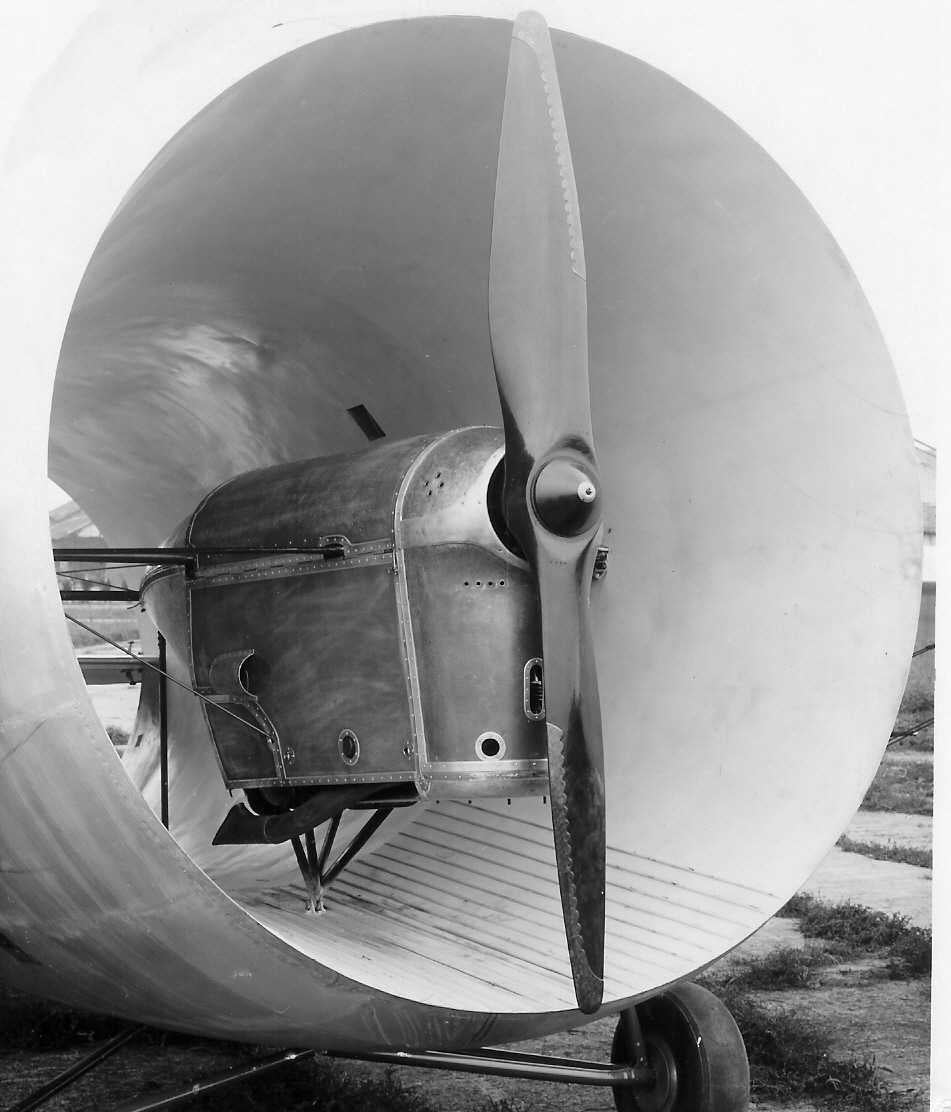
The engine at the front of the tubular fuselage of the Stipa-Caproni (Author unknown)
One of the more exotic ideas to come out of this period was the Stipa-Caproni, also known by the reverse name Caproni Stipa. Created by Italian engineer !!!error: Indecipherable SUB-paragraph formatting!!! and built by manufacturer !!!error: Indecipherable SUB-paragraph formatting!!! , the barrel-like fuselage was a tapered airfoil shape which created a !!!error: Indecipherable SUB-paragraph formatting!!! that compressed the air moved by the propeller and sped it up, putting into practice the principles of fluid dynamics first described by !!!error: Indecipherable SUB-paragraph formatting!!! in 1738. Stipa called his invention an intubed propeller , and he rigorously calculated the shape of both the tube and the propeller, as well as the speed of the propeller, for optimal efficiency. The aircraft’s elliptical wing passed through the oversized fuselage behind the propeller, and the rudder and elevators were mounted directly behind the tubular fuselage to benefit from the passage of air through the gaping fuselage. Two pilots sat in tandem high atop the aircraft.
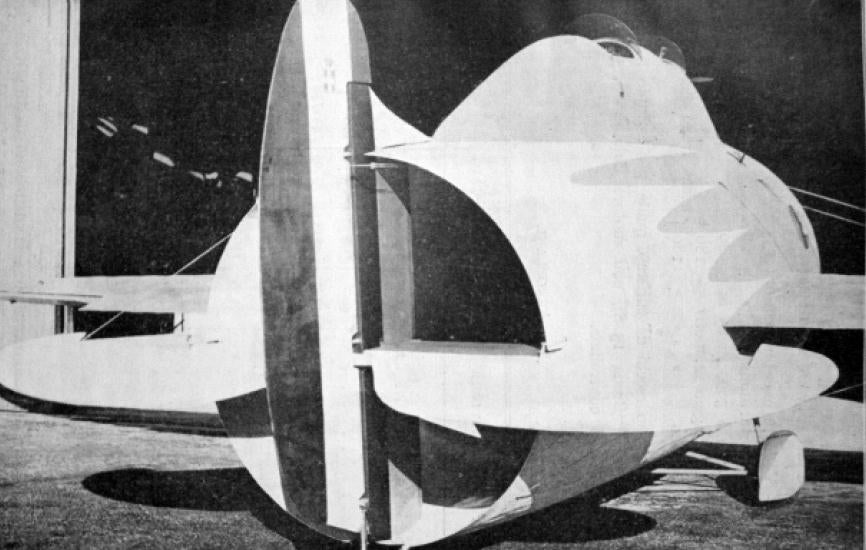
The vertical and horizontal stabilizers mounted at the rear of the fuselage tube allow air from the engine to flow over the control surfaces. (Author unknown)
In 1932, Stipa convinced the Italian government to fund the construction of his unorthodox airplane. Test pilots found that the aircraft was extremely stable, almost to the point of being difficult to turn. And the fact that the entire aircraft helped generate lift meant that extremely slow landing speeds were possible. Despite promising test results, the Stipa-Caproni failed to outperform contemporary aircraft, and the project was canceled. However, Stipa’s work was quite influential and widely studied, and some consider his intubed propeller, which is essentially a
!!!error: Indecipherable SUB-paragraph formatting!!!
, as the precursor to the modern
!!!error: Indecipherable SUB-paragraph formatting!!!
engine.
!!! UNKNOWN CONTENT TYPE !!!
Short Takeoff
!!! UNKNOWN CONTENT TYPE !!!

(NASA)
October 5, 1984 – The launch of Space Shuttle Challenger on STS-41-G. The !!!error: Indecipherable SUB-paragraph formatting!!! tallied many firsts during its 34 years of spaceflights, not the least of which was the first launch and return of a reusable spacecraft and the flight of !!!error: Indecipherable SUB-paragraph formatting!!! , the first American woman in space. But !!!error: Indecipherable SUB-paragraph formatting!!! had its own impressive list of firsts, some important, some rather mundane. The main goal of the mission was to deliver the !!!error: Indecipherable SUB-paragraph formatting!!! into orbit, but Challenger also carried the largest crew of any mission with seven astronauts. It was the first time that two women went to space (Ride and !!!error: Indecipherable SUB-paragraph formatting!!! ), and Sullivan was the first woman astronaut to perform a space walk ( !!!error: Indecipherable SUB-paragraph formatting!!! ). Also among the crew were !!!error: Indecipherable SUB-paragraph formatting!!! , the first Australian-born astronaut, and !!!error: Indecipherable SUB-paragraph formatting!!! , the first Canadian astronaut. And, topping it off, Scully-Power was the first astronaut with a beard.
!!! UNKNOWN CONTENT TYPE !!!
 !!!CAPTION ERROR: MAY BE MULTI-LINE OR CONTAIN LINK!!!
!!!CAPTION ERROR: MAY BE MULTI-LINE OR CONTAIN LINK!!!
October 5, 1967 – The first flight of the Shin Meiwa US-1A, a large, amphibious !!!error: Indecipherable SUB-paragraph formatting!!! (STOL) flying boat developed from the Shin Meiwa PS-1 and used by the Japan Maritime Self-Defense Force for maritime patrol, anti-submarine warfare (ASW) and search and rescue (SAR). The hull of the US-1A is based on a refinement of the the !!!error: Indecipherable SUB-paragraph formatting!!! hull design, and a special boundary layer control system helps to reduce the takeoff distance. In 23 years of service, the US-1A and her crews have reportedly saved 550 lives.
!!! UNKNOWN CONTENT TYPE !!!

(Author unknown)
October 5, 1918 – The death of Roland Garros. Born on October 6, 1888, Eugène Adrien Roland Georges Garros was a French aviation pioneer who competed in air races and set a world altitude record of 18,410 ft in 1911. During WWI, Garros helped develop a system of bullet deflectors that allowed gunnery through the propeller and, on August 3, 1914, Garros shot down a German !!!error: Indecipherable SUB-paragraph formatting!!! , receiving credit for the first aerial victory in history. Garros was shot down and killed just one day short of his 30th birthday, five weeks before the !!!error: Indecipherable SUB-paragraph formatting!!! that ended WWI. Despite his lasting fame, though, Garros was not officially an ace, having downed four aircraft during the war, one short of the five necessary for acedom.
!!! UNKNOWN CONTENT TYPE !!!

(Author unknown)
October 5, 1914 – The first air-to-air combat victory against another airplane is recorded when a !!!error: Indecipherable SUB-paragraph formatting!!! pusher biplane of Escadrille VB24, piloted by Sgt. Joseph Frantz with observer Cpl. Louis Quénault, shot down a German !!!error: Indecipherable SUB-paragraph formatting!!! over Reims, France. Frantz fired nearly 100 rounds from his !!!error: Indecipherable SUB-paragraph formatting!!! machine gun, while the German observer returned fire with his rifle. After running out of ammunition, the French observer continued firing with his rifle, and the German plane crashed, killing both crewmen.
!!! UNKNOWN CONTENT TYPE !!!

(US Army)
October 6, 1983 – The first flight of the Bell OH-58D Kiowa Warrior. The OH-58 Kiowa is a development of the civilian !!!error: Indecipherable SUB-paragraph formatting!!! and entered service in 1969 in response to an Army requirement for a !!!error: Indecipherable SUB-paragraph formatting!!! (LOH). The OH-58D Kiowa Warrior variant was a product of the Advanced Helicopter Improvement Program (AHIP) which included improved radar for nap-of-the-earth flight, a quieter four-bladed rotor, and a mast-mounted sight (MMS) for locating targets from behind the cover of terrain. The OH-58D is fitted with pylons that can hold two !!!error: Indecipherable SUB-paragraph formatting!!! missiles, seven rockets, two air-to-air !!!error: Indecipherable SUB-paragraph formatting!!! missiles or one fixed .50 caliber machine gun.
!!! UNKNOWN CONTENT TYPE !!!

(Author unknown)
October 6, 1954 – The first flight of the Fairey Delta 2,
a British research aircraft that was developed to explore the regimes of transonic and supersonic flight. The Fairey Delta 2 was powered by a single
!!!error: Indecipherable SUB-paragraph formatting!!!
axial flow jet engine and was the first aircraft to exceed 1,000 mph, a world speed record that it held for more than a year before being surpassed by the
!!!error: Indecipherable SUB-paragraph formatting!!!
. The Delta 2 was also the first British aircraft to have all of its flight surfaces hydraulically controlled. Two prototypes were built, and one was significantly modified to become the BAC 221 which was used for high-speed delta wing testing as part of the development of the Concorde supersonic transport.
!!! UNKNOWN CONTENT TYPE !!!

(US Navy)
October 6, 1939 – The first flight of the Curtiss SO3C Seamew,
a monoplane seaplane designed for the US Navy to replace the
!!!error: Indecipherable SUB-paragraph formatting!!!
. Per the US Navy requirement, the Seamew could be equipped with either floats or landing gear. To address stability problems, the wingtips were curved upward, and the vertical stabilizer extended across the observer’s cockpit. Due to unresolved problems with the
!!!error: Indecipherable SUB-paragraph formatting!!!
inline V-12 engine, the Seamew was withdrawn from frontline units in 1944 in favor of the older biplanes it was meant to replace. Nearly 800 Seamews were built, and the type was retired in 1945.
!!! UNKNOWN CONTENT TYPE !!!
 !!!CAPTION ERROR: MAY BE MULTI-LINE OR CONTAIN LINK!!!
!!!CAPTION ERROR: MAY BE MULTI-LINE OR CONTAIN LINK!!!
October 7, 1995 – The first flight of the Mitsubishi F-2, a fighter built in cooperation between !!!error: Indecipherable SUB-paragraph formatting!!! and !!!error: Indecipherable SUB-paragraph formatting!!! for the Japanese Air Self-Defense Force. Based on the !!!error: Indecipherable SUB-paragraph formatting!!! , the F-2 features a larger wing made of composite materials, larger tail plane, larger nose housing a more a powerful radar, a larger air intake and a three-piece canopy. Under the terms of the partnership, advances made in the F-2 were transferred back to Lockheed Martin for use in future US fighters. A total of 94 aircraft were produced from 1995-2011.
!!! UNKNOWN CONTENT TYPE !!!
 !!!CAPTION ERROR: MAY BE MULTI-LINE OR CONTAIN LINK!!!
!!!CAPTION ERROR: MAY BE MULTI-LINE OR CONTAIN LINK!!!
October 7, 1963 – The first flight of the Learjet 23, the world’s first light business jet. A true pioneer in the world of business jet (bizjet) aviation, the LearJet 23 originated in Switzerland where it was conceived by !!!error: Indecipherable SUB-paragraph formatting!!! and designed by Hans-Luzius Studer, who had worked previously on the !!!error: Indecipherable SUB-paragraph formatting!!! fighter for Switzerland. The six-passenger bizjet became an instant success, and production was moved to the US where 105 aircraft were completed from 1962-1966. The LearJet has been continuously upgraded and enlarged since, and newer variants remain in production.
!!! UNKNOWN CONTENT TYPE !!!
Connecting Flights
!!! UNKNOWN CONTENT TYPE !!!
!!! UNKNOWN CONTENT TYPE !!!
!!! UNKNOWN CONTENT TYPE !!!
!!! UNKNOWN CONTENT TYPE !!!
!!! UNKNOWN CONTENT TYPE !!!
If you enjoy these Aviation History posts, please let me know in the comments. And if you missed any of the past articles, you can find them all at
!!!error: Indecipherable SUB-paragraph formatting!!!
. You can also find more stories about aviation, aviators and airplane oddities at
!!!error: Indecipherable SUB-paragraph formatting!!!
.
!!! UNKNOWN CONTENT TYPE !!!
 Spaceball-Two
> ttyymmnn
Spaceball-Two
> ttyymmnn
10/08/2019 at 13:15 |
|
Thought you might appreciate this. Stopped in and saw the progress on the Junker last week.
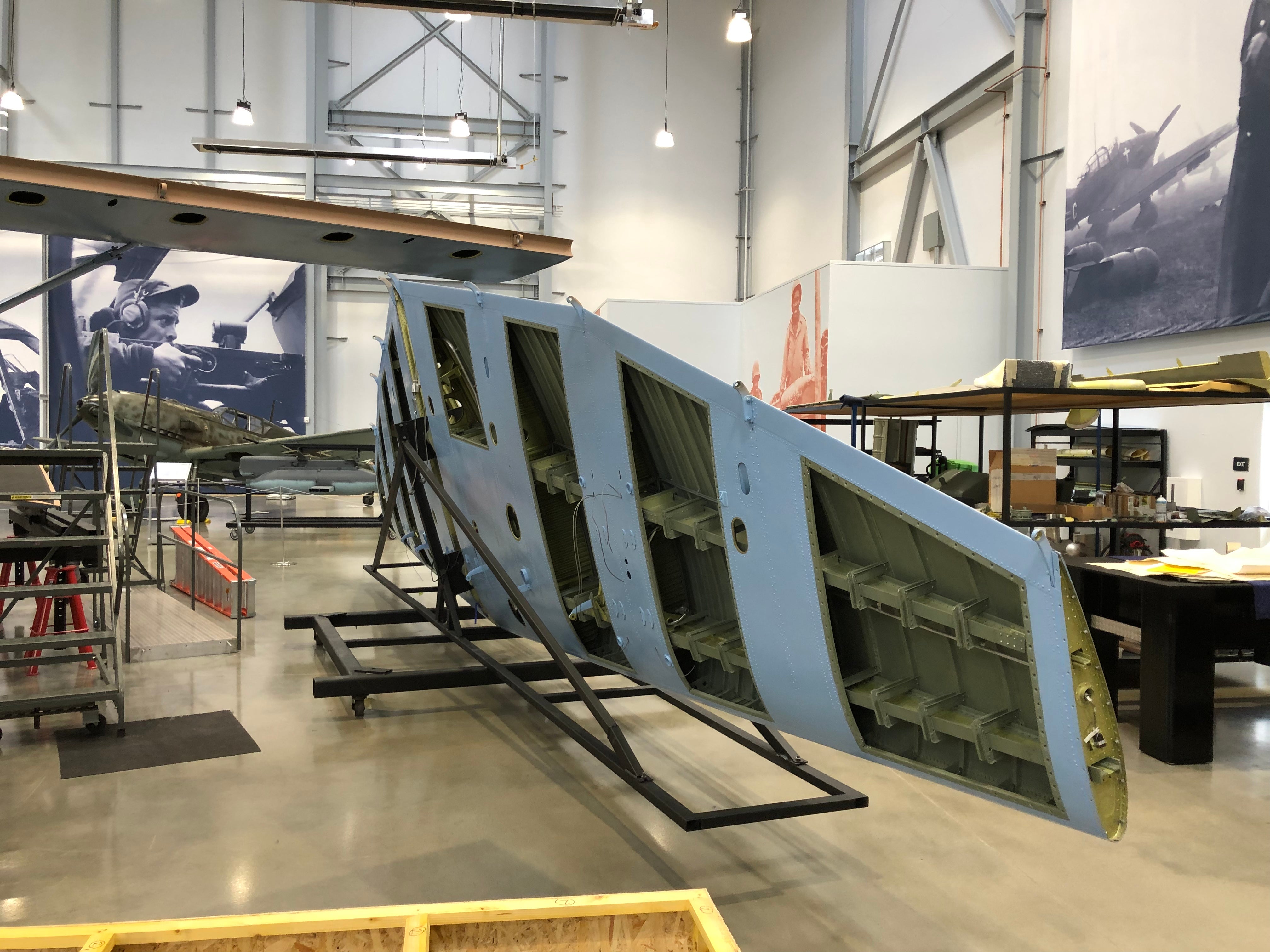



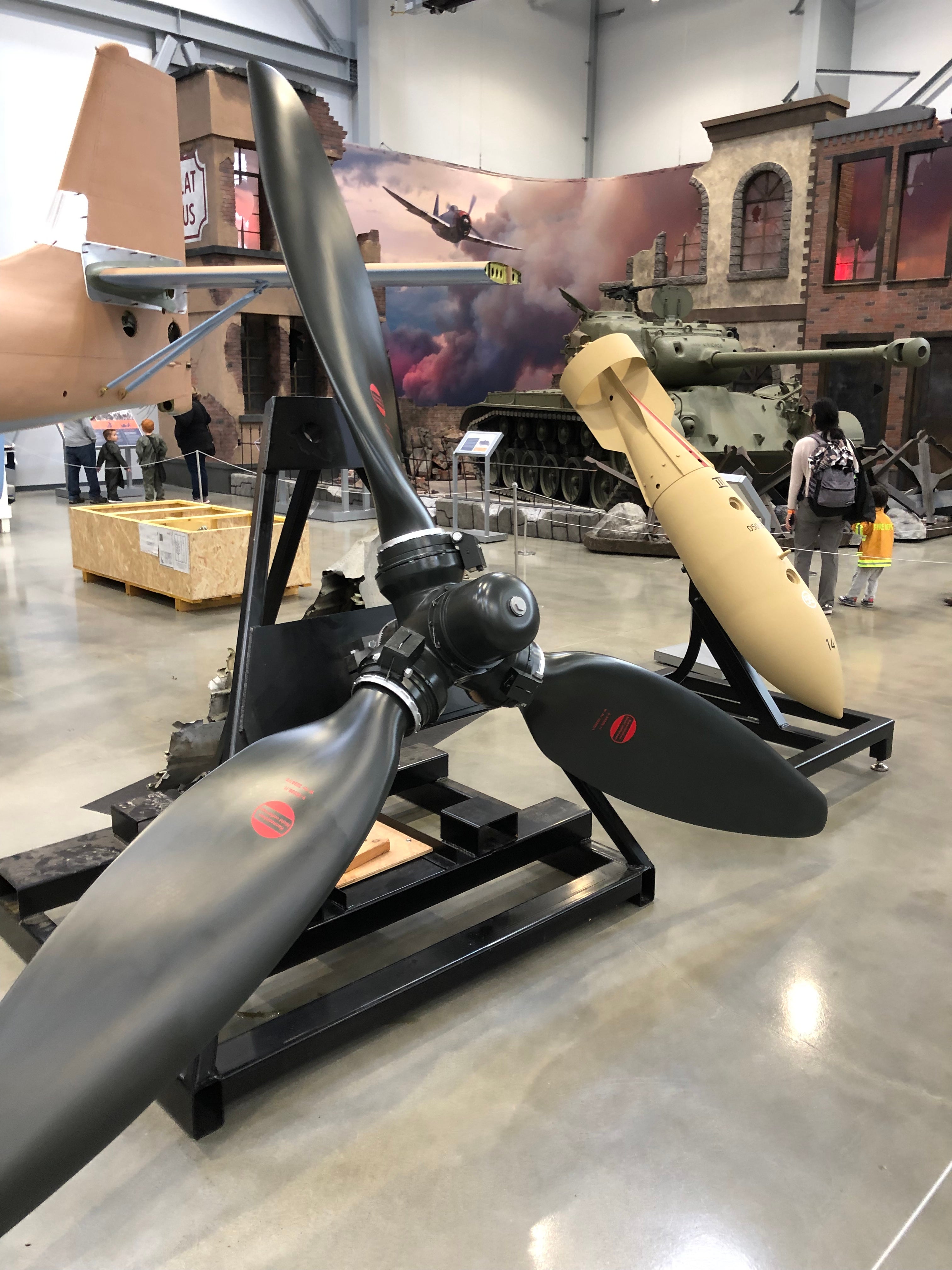


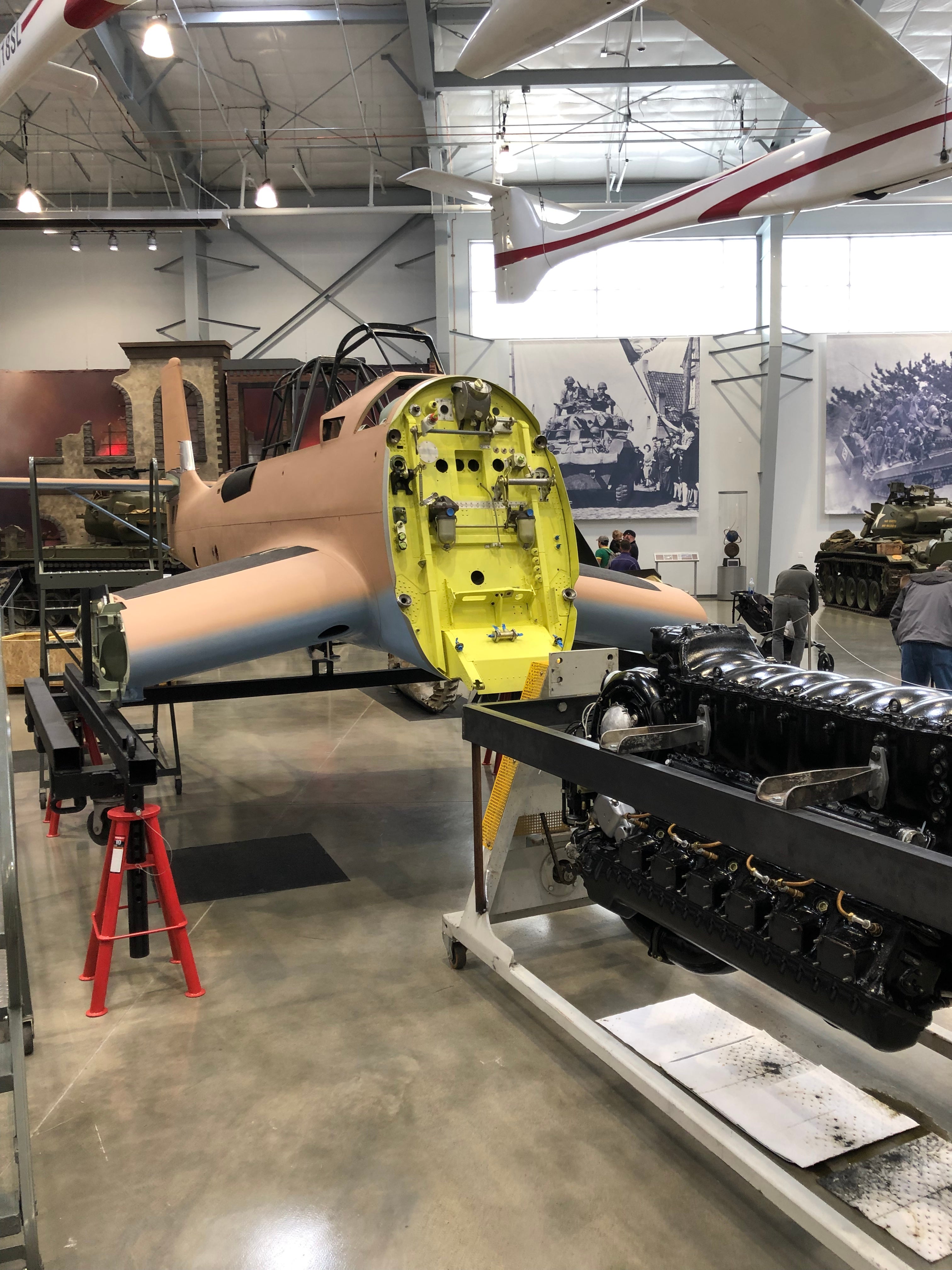



 ttyymmnn
> Spaceball-Two
ttyymmnn
> Spaceball-Two
10/08/2019 at 13:21 |
|
Fantastic. Thanks! That 109 in the background looks fantastic.
 Spaceball-Two
> ttyymmnn
Spaceball-Two
> ttyymmnn
10/08/2019 at 13:29 |
|
It’s real nice too. Rumor is there’s a hybrid restoration of a ME 262 going on up there too.
 user314
> ttyymmnn
user314
> ttyymmnn
10/08/2019 at 13:35 |
|
Supposedly the bulk of the Moldovan MiG-29s have been scrapped, with 6 listed as being on display:
!!! UNKNOWN CONTENT TYPE !!!
Goodfellow AFB in San Angelo, Texas.
NAS Fallon Airpark.
The National Air Intelligence Center at Wright-Patterson AFB , Ohio. A two-seat MiG-29UB is on display.
2 MiG-29s are on display at Nellis AFB . One is at the outside of the Threat Training Facility and another, in better shape, inside a hangar alongside a MiG-23 .
One in the
Cold War Exhibit
at the
National Museum of the United States Air Force
near
Dayton, Ohio
.